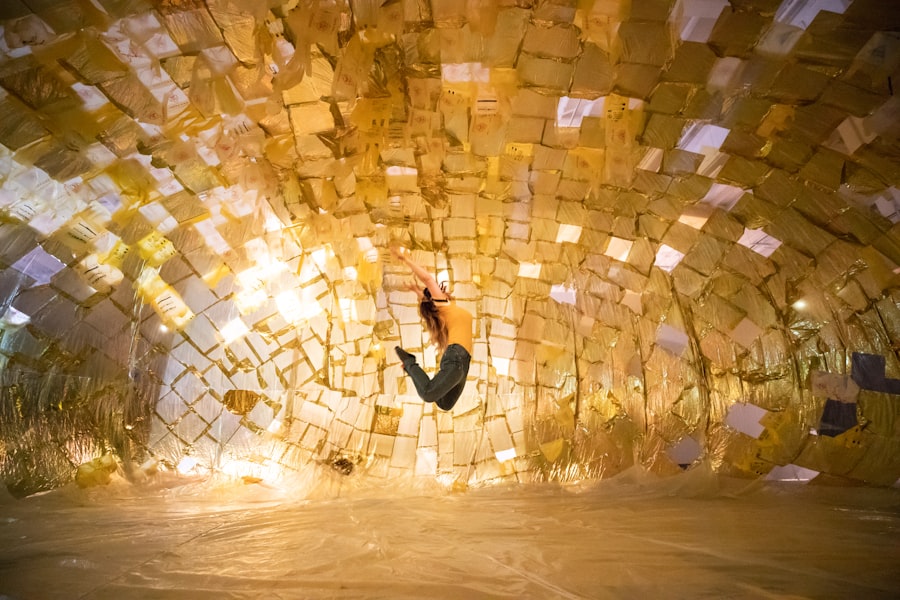Aftercare is a crucial aspect of any cosmetic procedure, and laser hair removal is no exception. You may find that the way you care for your skin post-treatment can significantly influence the results you achieve. Proper aftercare not only helps in minimizing side effects but also enhances the effectiveness of the treatment.
By understanding the importance of aftercare, you can ensure that your skin heals properly and that you enjoy the long-lasting benefits of laser hair removal. When you undergo laser hair removal, your skin is subjected to intense light energy, which targets hair follicles. This process can leave your skin sensitive and vulnerable to irritation.
Therefore, it’s essential to follow a structured aftercare routine to protect your skin. This includes avoiding sun exposure, using soothing creams, and staying hydrated. By prioritizing aftercare, you can reduce the risk of complications such as hyperpigmentation or infection, allowing your skin to recover optimally and ensuring that you achieve the smooth, hair-free skin you desire.
Key Takeaways
- Aftercare is crucial for successful laser hair removal and can help prevent complications and promote optimal results.
- Precautions after laser hair removal include avoiding sun exposure, hot showers, and certain skincare products to prevent irritation and complications.
- Recommended exercise regimen post-laser hair removal includes low-impact activities like walking, yoga, and swimming to avoid excessive sweating and friction on the treated area.
- Benefits of exercise after laser hair removal include improved circulation, reduced inflammation, and enhanced skin healing.
- Tips for safe and effective post-laser hair removal exercise include wearing loose clothing, staying hydrated, and avoiding high-intensity workouts to prevent irritation and discomfort.
Precautions to Take After Laser Hair Removal
After your laser hair removal session, there are several precautions you should take to safeguard your skin. First and foremost, it’s vital to avoid direct sunlight for at least two weeks following the procedure. Your skin will be more sensitive to UV rays, which can lead to sunburn or pigmentation changes.
Wearing protective clothing and applying a broad-spectrum sunscreen with a high SPF can help shield your skin from harmful rays. This precaution is not just about immediate protection; it also plays a role in maintaining the results of your treatment over time. In addition to sun protection, you should also refrain from using harsh skincare products immediately after your session.
This includes exfoliants, retinoids, and any products containing alcohol or fragrances that could irritate your sensitive skin. Instead, opt for gentle cleansers and moisturizers that will help soothe and hydrate your skin. Keeping your skin well-moisturized is essential for recovery, as it aids in healing and reduces discomfort.
By taking these precautions seriously, you can create an optimal environment for your skin to heal and thrive.
Recommended Exercise Regimen Post-Laser Hair Removal

When it comes to exercising after laser hair removal, timing is everything. While staying active is important for overall health, you should be mindful of how soon you resume your workout routine. It’s generally recommended to wait at least 24 to 48 hours before engaging in any strenuous physical activity.
This waiting period allows your skin to settle down after the treatment and reduces the risk of irritation or complications. Once you feel ready to return to exercise, consider starting with low-impact activities such as walking or gentle yoga. These types of exercises can help maintain circulation without putting too much strain on your skin.
As you progress and your skin begins to feel more comfortable, you can gradually reintroduce more intense workouts. However, always listen to your body; if you experience any discomfort or irritation during exercise, it’s wise to scale back and give yourself more time to recover.
Benefits of Exercise After Laser Hair Removal
| Benefits of Exercise After Laser Hair Removal |
|---|
| 1. Promotes blood circulation |
| 2. Reduces inflammation |
| 3. Enhances lymphatic drainage |
| 4. Improves skin elasticity |
| 5. Helps in preventing ingrown hairs |
| 6. Boosts overall well-being |
Engaging in regular exercise after laser hair removal can offer numerous benefits that extend beyond physical fitness. For one, exercise promotes blood circulation, which can aid in the healing process of your skin. Improved blood flow helps deliver essential nutrients and oxygen to the treated areas, potentially enhancing recovery time and overall results.
Additionally, exercise can help alleviate any stress or anxiety you may feel about the procedure, allowing you to enjoy a more positive mindset as you navigate your post-treatment journey. Moreover, staying active can also contribute to maintaining the results of your laser hair removal. Regular exercise helps regulate hormones and metabolism, which can prevent unwanted hair growth in the future.
By incorporating a consistent workout routine into your lifestyle, you not only support your body’s healing process but also create a foundation for long-term success in achieving smooth skin.
Tips for Safe and Effective Post-Laser Hair Removal Exercise
To ensure that your post-laser hair removal exercise routine is both safe and effective, there are several tips you should keep in mind. First, always start with a warm-up session before diving into any workout. Gentle stretching or light cardio can prepare your muscles and skin for more intense activity while reducing the risk of injury.
Additionally, consider wearing breathable fabrics that wick away moisture; this will help keep your skin comfortable and minimize irritation during exercise. Hydration is another critical factor when exercising post-treatment. Drinking plenty of water not only supports overall health but also helps keep your skin hydrated from within.
This is especially important after laser hair removal since your skin may be more prone to dryness or irritation during the healing process. Lastly, pay attention to how your body feels during workouts; if you notice any signs of discomfort or irritation in the treated areas, don’t hesitate to modify your routine or take a break until you feel ready to continue.
Common Mistakes to Avoid When Exercising After Laser Hair Removal

While exercising post-laser hair removal can be beneficial, there are common mistakes that you should avoid to ensure a smooth recovery process. One significant error is jumping back into high-intensity workouts too soon. Your skin needs time to heal after treatment, and pushing yourself too hard can lead to irritation or even complications like blistering or scarring.
It’s essential to respect your body’s signals and allow adequate time for recovery before resuming intense exercise. Another mistake is neglecting proper skincare before and after workouts. Failing to apply sunscreen or moisturizer can leave your sensitive skin vulnerable during exercise, especially if you’re sweating or exposed to sunlight.
Additionally, skipping post-workout skincare routines can hinder recovery; always cleanse and moisturize your skin after exercising to remove sweat and impurities while keeping it hydrated. By avoiding these common pitfalls, you can create a safer environment for your skin as it heals from laser hair removal.
Monitoring Progress and Adjusting Exercise Routine
As you embark on your post-laser hair removal exercise journey, monitoring your progress is key to ensuring that you’re on the right track. Keep an eye on how your skin responds during workouts; if you notice any redness or irritation in treated areas, it may be necessary to adjust the intensity or type of exercise you’re doing. Documenting these observations can help you identify patterns and make informed decisions about when to increase the intensity of your workouts.
Additionally, consider setting realistic fitness goals that align with your recovery timeline. While it’s great to be ambitious about getting back into shape, remember that healing takes time. Gradually increasing the intensity of your workouts as your skin heals will not only help prevent complications but also allow you to enjoy a more sustainable fitness journey.
By being mindful of both your physical fitness goals and the needs of your skin, you can create a balanced approach that supports both aspects effectively.
Consulting with a Professional for Personalized Aftercare Advice
Finally, one of the best steps you can take for effective aftercare following laser hair removal is consulting with a professional. Whether it’s a dermatologist or a licensed aesthetician, these experts can provide personalized advice tailored specifically to your skin type and treatment history. They can guide you on how best to care for your skin post-treatment and offer recommendations on suitable exercises based on your individual needs.
Moreover, professionals can help address any concerns or questions you may have about resuming physical activity after laser hair removal. They can provide insights into what signs of irritation or complications to watch for during exercise and how best to manage them if they arise. By seeking professional guidance, you empower yourself with knowledge that enhances both your recovery process and overall experience with laser hair removal.
By taking necessary precautions, adopting a suitable exercise regimen, and consulting with professionals when needed, you set yourself up for success in enjoying smooth, hair-free skin for years to come.
After undergoing laser hair removal, it is important to follow proper aftercare instructions to ensure the best results. One important aspect of aftercare is incorporating exercise into your routine. Exercise can help improve circulation, which can aid in the healing process and reduce the risk of infection. It is recommended to avoid strenuous exercise for the first 24-48 hours after treatment, but light exercise such as walking or gentle yoga can be beneficial. For more information on how to customize your aftercare routine, check out this article on customizing your interests.
FAQs
What is laser hair removal aftercare exercise?
Laser hair removal aftercare exercise refers to the physical activities and movements that should be avoided or modified after undergoing a laser hair removal treatment. This is to ensure proper healing and to minimize the risk of complications.
Why is it important to consider exercise after laser hair removal?
It is important to consider exercise after laser hair removal because physical activities can impact the healing process and the effectiveness of the treatment. Certain exercises can increase the risk of irritation, inflammation, or even scarring in the treated area.
What types of exercise should be avoided after laser hair removal?
High-impact activities such as running, jumping, or intense weightlifting should be avoided after laser hair removal. Additionally, activities that cause excessive sweating or friction on the treated area should also be avoided.
How long should I wait to exercise after laser hair removal?
It is recommended to wait at least 24-48 hours before engaging in any form of exercise after laser hair removal. However, this timeframe may vary depending on the individual’s skin sensitivity and the intensity of the treatment.
Are there any specific exercises that are safe to do after laser hair removal?
Gentle, low-impact exercises such as walking, yoga, or light stretching are generally safe to do after laser hair removal. It is important to listen to your body and avoid any activities that cause discomfort or irritation to the treated area.
What precautions should I take when exercising after laser hair removal?
When exercising after laser hair removal, it is important to wear loose-fitting clothing to minimize friction on the treated area. Additionally, it is crucial to keep the treated area clean and dry to prevent infection. If any discomfort or unusual symptoms occur during or after exercise, it is advisable to consult with a healthcare professional.





